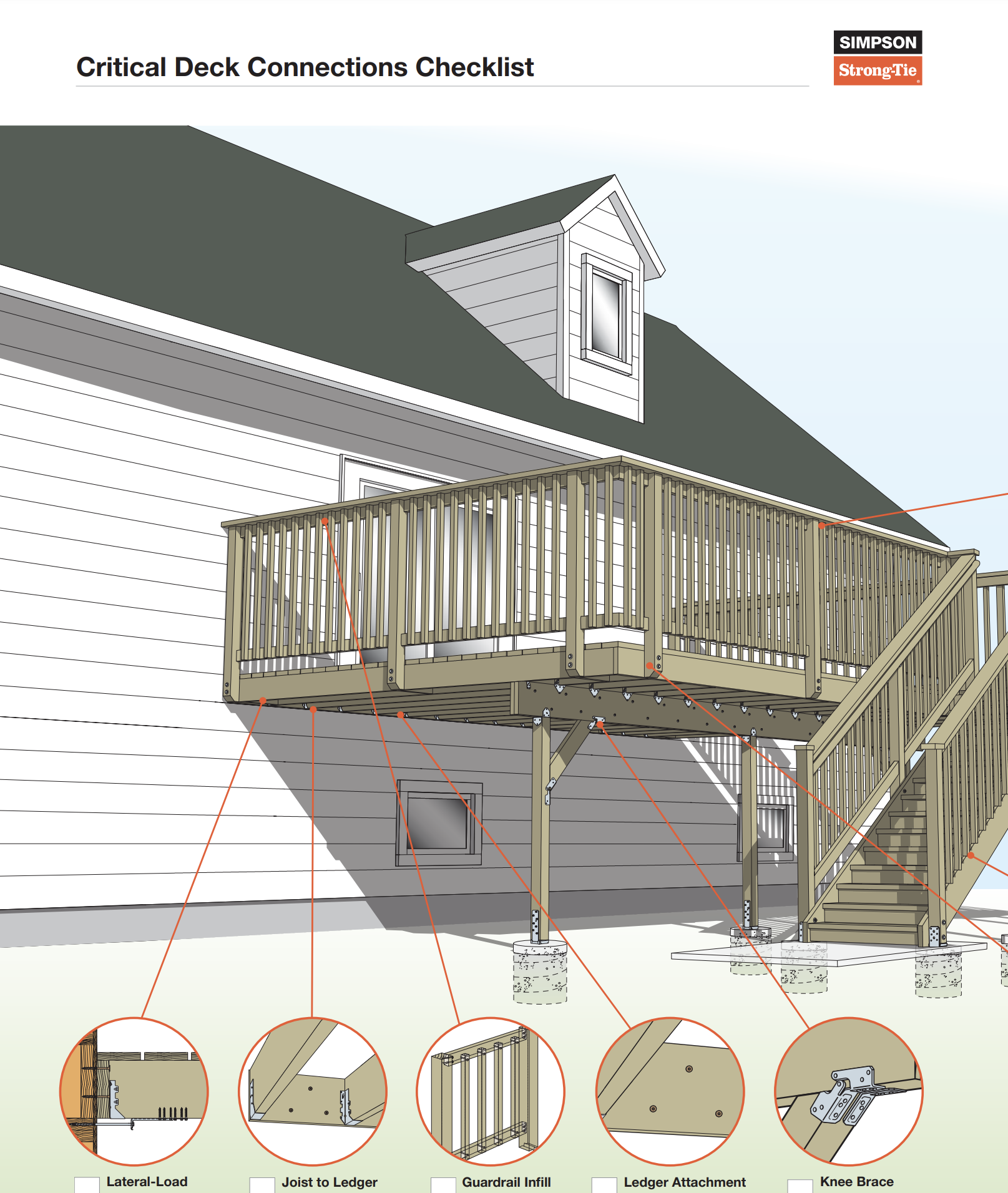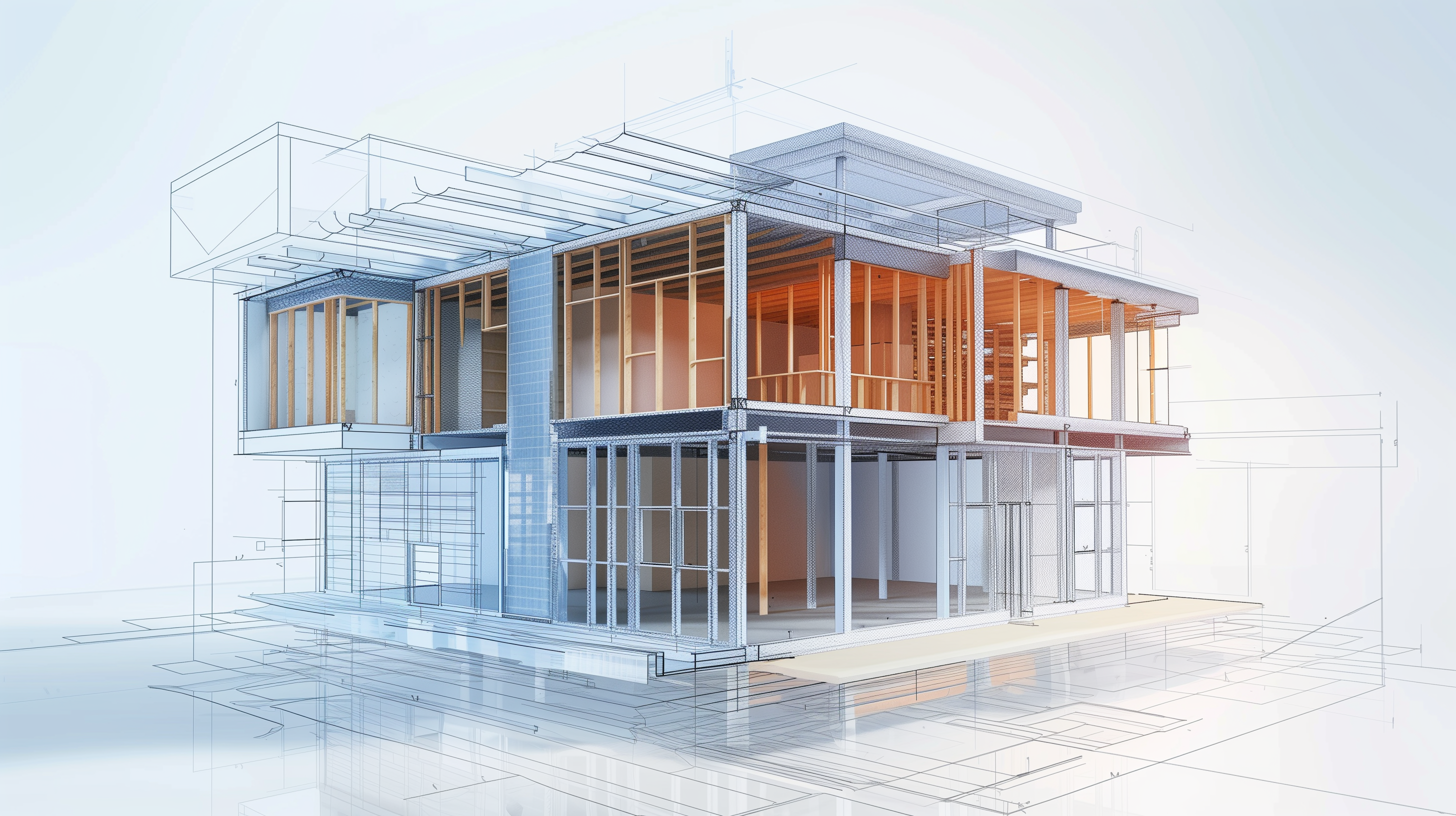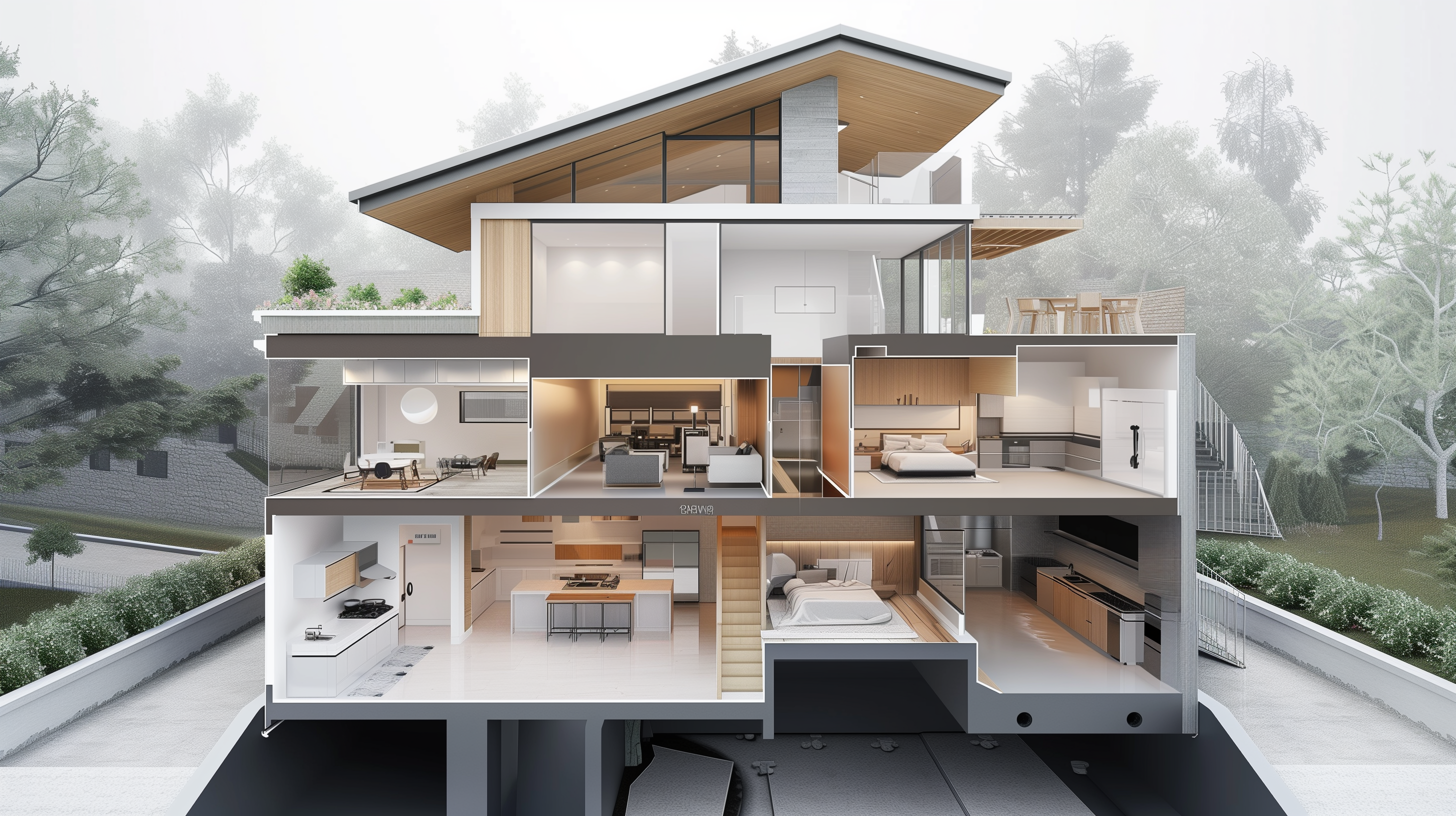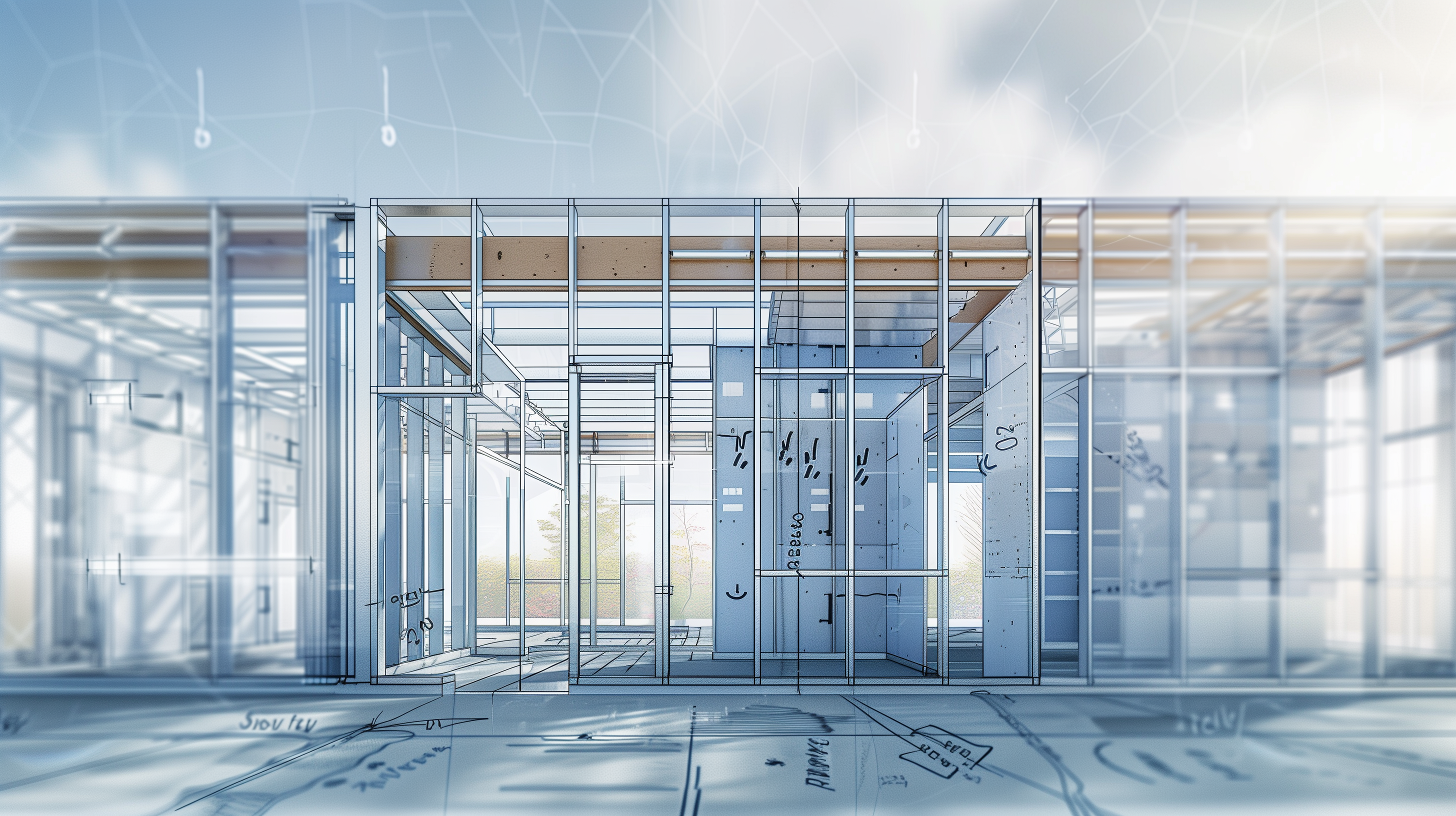Building a deck that is both safe and compliant with building codes requires careful planning and precise construction. Establishing a continuous load path through a system of key connections throughout the deck framing is essential. This checklist will guide you through the necessary connections to ensure your deck is structurally sound and meets all building code requirements.
Key Deck Connections for Continuous Load Path
1. Lateral-Load Connection
A lateral-load connection is crucial for preventing the deck from pulling away from the house. This connection helps resist lateral forces such as wind or seismic activity.
- How to Install: Use hold-down tension devices to secure the deck joists to the house framing.
2. Guardrail Infill Component Connections
Guardrails must be securely attached to prevent falls and ensure safety.
- How to Install: Connect the guardrail infill components to the posts using screws or bolts that meet the building code requirements.
3. Joist to Ledger
Joists must be properly attached to the ledger board to provide support and stability to the deck.
- How to Install: Use joist hangers that are appropriately sized for your joists and attach them to the ledger with the recommended fasteners.
4. Ledger Attachment
The ledger board is the critical connection point between the deck and the house. Proper attachment is essential for the stability of the deck.
- How to Install: Attach the ledger board to the house framing using lag screws or through bolts. Ensure the connection is waterproofed to prevent rot.
5. Knee Brace
Knee braces help provide additional support to the deck frame, especially for larger or elevated decks.
- How to Install: Install knee braces between the posts and beams at a 45-degree angle, securing them with bolts or heavy-duty screws.
6. Guardrail-to-Post Connections
Guardrails must be firmly connected to the posts to withstand the required load.
- How to Install: Use metal brackets or straps to secure the guardrails to the posts, ensuring they can resist the 200-pound force required by the building codes.
7. Stair Tread to Stringer
Stair treads must be securely attached to the stringers to ensure safe and stable stairs.
- How to Install: Use screws or nails specifically designed for stair treads, attaching each tread to the stringers with at least two fasteners on each side.
8. Post to Footing
Posts must be firmly anchored to the footings to provide a stable foundation for the deck.
- How to Install: Use post bases that are anchored into the concrete footings, securing the posts with bolts or heavy-duty screws.
9. Beam to Post
Beams must be securely attached to the posts to support the deck structure.
- How to Install: Use metal post caps or brackets to connect the beams to the posts, ensuring a strong and stable connection.
10. Joist to Beam
Joists must be properly connected to the beams to provide adequate support.
- How to Install: Use joist hangers or hurricane ties to attach the joists to the beams, securing them with the recommended fasteners.
11. Stair Stringer to Deck Framing
Stair stringers must be securely attached to the deck framing to ensure stable stairs.
- How to Install: Use metal brackets or connectors designed for stair stringers, securing them to the deck framing with screws or bolts.
12. Guard Post to Deck Framing
Guard posts must be securely attached to the deck framing to resist lateral forces and provide a safe guardrail system.
- How to Install: Use metal brackets or blocking to secure the guard posts to the deck framing, ensuring they can resist the required load.
Inspection and Retrofitting
For existing decks, it is essential to inspect these connections to ensure they meet current building codes and safety standards. Retrofit any connections that are inadequate or showing signs of wear or damage.
For more detailed information and guidelines on deck construction, visit strongtie.com/deckcenter.
Conclusion
By following this checklist and ensuring all key connections are properly installed, you can build a deck that is safe, compliant with building codes, and able to withstand various forces. A well-constructed deck provides a secure and enjoyable outdoor space for years to come.
For immediate service or consultation, you may contact us at Allied Emergency Services, INC.
Contact Information:
- Phone: 1-800-792-0212
- Email: Info@AlliedEmergencyServices.com
- Location: Serving Illinois, Wisconsin, and Indiana with a focus on the greater Chicago area.
If you require immediate assistance or have specific questions, our human support is readily available to help you.
Disclaimer: This article is intended for informational purposes only. For professional advice, consult experts in the field.










